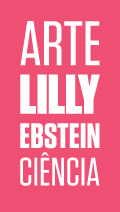Alfonso Bovero
AND THE SCHOOL OF ANATOMY
-
 Lilly Ebstein | Clique para ver +
Lilly Ebstein | Clique para ver + -
 Alfonso Bovero | Clique para ver +
Alfonso Bovero | Clique para ver + -
 Anatomia | Clique para ver +
Anatomia | Clique para ver + -
 Faculdade de Medicina | Clique para ver +
Faculdade de Medicina | Clique para ver + -
 Hospital da Santa Casa de S. Paulo | Clique para ver +
Hospital da Santa Casa de S. Paulo | Clique para ver +
An article by Professor of Anatomy Alfonso Bovero was illustrated by Lilly in 1926 in the first edition of the Annals of the School of Medicine of São Paulo.
In the first edition of the Annaes da Faculdade de Medicina de São Paulo (Annals of the School of Medicine of São Paulo), the School’s first scientific publication that began to be issued in 1926, Lilly’s work illustrates an article by Alfonso Bovero, full professor of Anatomy. The article, an “introductory remark”, was “On a Special and Constant pre-hypophyseal endocranial ossification in Bradypus”.
According to Bovero, “This introductory remark, and it is only a preliminary note, intends to draw the attention of morphologists to a bony element I found in the thickness of the dura mater of the pre-hypophyseal region of the basis cranii interna, in the common sloth”. According to Professor Edson Aparecido Liberti, Bovero “was a naturalist, who wanted to associate Anatomy and Research, and compared it to animals to understand evolution. He wanted to implement a philosophy of research”. [1]
In the article of the 1926 Annals, there are three drawings by Lilly, which portray the natural size, and two photographs by Alberto Federmann, with a 2:1 magnification, on one single page.
Alfonso Bovero was born in 1871, in Pezzeto Torinese, in the Piedmont, the son of a physician. He graduated in Medicine and Surgery from the University of Turin in 1895. For his doctoral dissertation, “Intorno ai muscoli digastrici dell’osso joide”, defended in 1895, he received the Reviglio prize, from the Royal Academy of Medicine of Turin. He studied Anatomy with Carlo Giacomini, the foremost figure of the School of Anatomy of Turin and the author of a classical treaty on human Anatomy.
In 1897, he took a Histology and Embryology course with Hertwig, and an Anatomy course with Waldeyer, in Berlin. He became Full Professor of Anatomy and Physiology at the Institute for Higher Education in Physical Education and in 1902, became a lecturer in Normal, Descriptive and Topographic Anatomy at the University of Turin. From 1909 to 1910, he was head of the Anatomy Chair at the University of Cagliari. [2]
In 1914, Bovero was hired by Arnaldo Vieira de Carvalho to come to São Paulo to take over the Anatomy Chair and in the following year, the Histology Chair at the School of Medicine. Bovero worked until the end of 1936 at the School of Medicine, already part of USP, then returned to Italy and died in April 1937 in Turin.
Among the many illustrations by Lilly, the ones that refer to works of Anatomy are the most numerous from 1926 to 1956. These include research and publications by Alfonso Bovero and his disciples such as Renato Locchi and Odorico Machado de Souza, who were members of the “Bovero’s School of Anatomy” or “Anatomy School of São Paulo”, as Bovero himself used to call it. [3]
[1] Liberti, Edson Aparecido, “Arteriografia” da 1ª e 2ª Gerações da Família Anatômica de Alfonso Bovero. “Ramos” da Cidade de São Paulo. São Paulo, s/ed., 2008.
[2] Mota, André. “Il signore Alfonso Bovero: um anatomista ilustre na terra dos bandeirantes, São Paulo 1914-1937”, Rivista dell’Instituto di Storia dell’Europa Mediterranea, n. 6, giugno 2011, p. 355.
[3] Liberti, Edson A. “Arteriografia”: da 1ª e 2. Gerações da Família Anatômica de Alfonso Bovero. “Ramos” da Cidade de São Paulo. São Paulo, s/ed., 2008, p. 8.
 Professor Alfonso Bovero (4o da esq. p/ dir.) com seus assistentes da Cadeira de Anatomia na Faculdade de Medicina de São Paulo. / + informações »
Professor Alfonso Bovero (4o da esq. p/ dir.) com seus assistentes da Cadeira de Anatomia na Faculdade de Medicina de São Paulo. / + informações »Lilly Ebstein Lowenstein (1897-1966) led a life between science and art, drawing and taking photographs in the fields of Medicine and Zoology. In her work, Lilly combined her technical knowledge of photography and drawing, the study of the sciences and a remarkable talent for aesthetics. She was born in Germany and studied at the Lette-Verein School in Berlin from 1911 to 1914. In 1925, she immigrated with her husband and two children to São Paulo. In 1926, she became an illustrator and photomicrographer at the Illustration and Photography Department at the School of Medicine (USP, as of 1934), which she headed for thirty years after 1932. Lilly collaborated at Instituto Biológico de Defesa Agrícola e Animal (the Biological Institute for the Defense of Agriculture and Animals), from 1930 to 1935, namely in the Avian Pathology Department. A life with art dedicated to the research and dissemination of science.

